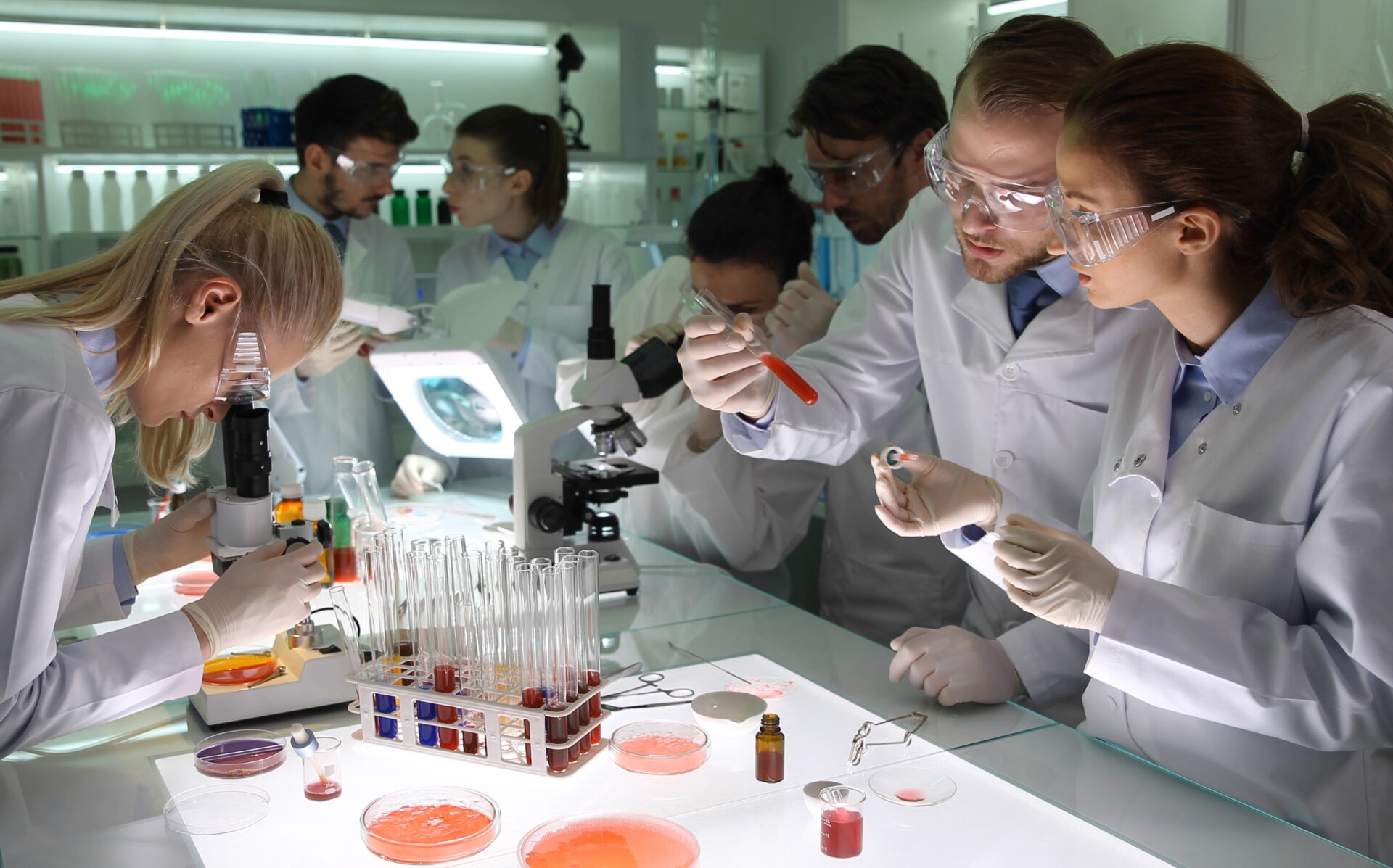Building a successful team of scientists is about more than just finding the right people to complete a set of tasks. You need to consider people who will not only work towards a common goal but who can also collaborate effectively and contribute to the growth and development of your team. Investing time in finding the right group structure will ultimately strengthen your team and ensure the continued success of your lab. So what is the best approach when it comes to building your team? We have highlighted some of the key drivers to help you to create a strong culture of teamwork in your lab.
Hire a Diverse Set of People
The typical process is to look at a person’s academic track record and relevant work experience. Relying only on this method runs the risk of hiring many of the ‘same’ people. Even if each candidate hired this way works great individually, as a team there may be something missing.
Widen the criteria you look for in a candidate. Some people are more theoretical-minded and others more practical. Some have an analytical mindset while others are more creative.

Creativity and practical ability are not often the focus when setting up a scientific team where theorists and analysts are typically preferred. But after all, science is a very creative and practical discipline. Novel ideas and solutions must be developed, and experiments designed and carried out.
It is also important to consider the ‘team fit’ when deciding on a new hire. Sometimes the most qualified candidate may not be the best fit for the lab. Your lab works best if its members can work successfully together.
Identify Strengths and Weaknesses
Typically team members that are given the opportunity for personal or professional development cite better overall work satisfaction. Have conversations with the group. What are their interests? What would they like to contribute to the team? What are their long-term career goals?
By allowing members to work on tasks aligned best with their interests the whole group works more effectively. It is rare to find the ‘perfect scientist’. Be flexible and try to assign responsibilities not solely based on who works best in that role, but also in consideration of the skills your team members want to develop. Try delegating different tasks or encourage collaboration with other team members that can help them to grow their skillset. Encouraging the development of your team rather than leaving them to stagnate in boredom performing repetitive tasks is vital to the long-term success of your lab
Establish a Supportive Work Environment
A work environment where members feel supported is essential for running a well-functioning lab. This starts with having a leader who understands the importance of establishing trust within their team. Make sure to have regular group meetings. Discuss ongoing projects or any issues that may be troubling the lab. These meetings should encourage members to speak freely and without the fear of negative consequences for raising specific issues.
When possible, take the time to meet with each member individually. One-on-one meetings are a great way to create a bond with your team and establish an open line of communication. In these meetings, topics can be brought up that a member might feel uncomfortable discussing with the entire group. Be cognizant of the fact that there will always be people that are still uncomfortable raising issues. Don’t just passively wait for them to tell you what is going on, if you notice something, ask. Encourage feedback on how you can become a better leader for them.

Encourage Collaboration
Collaboration within the lab is a sign of an effective team as it harnesses the best out of each member to work together. Everyone faces issues in their work at some stage, inevitably you will miscalculate something or come across a problem that you just cannot find the solution for. Having a minor issue turn into a major crisis is entirely preventable when you make collaboration a priority. Efficiency is a vital component to the success of any lab, so ensuring you’re utilizing the skill set of every member is essential.
Encourage teamwork by assigning projects to the group rather than individual tasks. If you have a particularly large team, where possible try to regularly rotate the members working together. Consider setting up regular meetings where one team member can present their current projects to the larger group. These meetings allow for other team members to gain insight into what their colleagues are working on and offer any feedback they might have.
Balance positive and critical feedback
Constructive criticism
Make sure you are properly prepared so you can provide solid, actionable feedback. Establish clearly what exactly has gone wrong? Next, consider reasons as to why and how the issue should be addressed. Develop an action plan in advance regarding changes you want to see in their performance and the necessary steps to achieve this. Allow for flexibility, ask for their input, and offer guidance. Rash and unconsidered criticism may demotivate your lab member and further impact their performance.
Remember also, not always does the burden of responsibility lie solely on the team member. Take, for example, a delicate weighing scale that has been overloaded and broken. At first glance, this is the lab member’s fault. Perhaps instead, one should look into why it was overloaded? Was there a lack of training? Maybe a clear warning label is needed? Use their mistake as an opportunity to implement preventative measures in your lab.
Positive feedback
Unlike criticism, praise is easy. Unfortunately, it is often overlooked as being unnecessary. Showing appreciation for a team member is one of the most powerful things you can do for morale. Praise gives people the drive and motivation to reach an even greater standard and improve their productivity.
A lab leader who acknowledges the accomplishments of the individual members, or the team as a whole, creates a work environment that people enjoy working in. Thereby not only increasing productivity but also ensuring people feel appreciated so they’re less likely to go job hunting elsewhere.
Try to notice the details and effort that went into their work and commend them on a job well done. Make sure to include your team, where appropriate, in decision-making or to ask their opinions. In doing so, you are recognizing their capabilities and acknowledging they have what it takes to succeed.
Set Clear Goals
Once you have your team in place, it’s important to then form a united group. Establishing clear goals to work towards creates a sense of identity and common cause within the team. Setting goals helps to boost performance by motivating people to increase their effort, creating stronger focus, and helping to prioritize relevant tasks. Set up a clear system like a common scoreboard that tracks the lab’s progress. People like metrics for a sense of clarity about their project and how well it is going. It also helps keep them motivated and the commonality of a shared metrics system encourages collaboration.
Communicate the progress by giving the team members regular lab updates. People feel valued and part of something bigger when they feel they are kept in the loop regarding what is happening in the lab.
Your team is ready!
The commonality throughout these points is that a team that can work collaboratively and communicates effectively is most likely to succeed. The saying ‘a problem shared is a problem halved’ rings true when you have a group of people with a diverse skill set working together, to overcome the daily challenges that come with working in the lab.
This all might sound simple, but just like the art of reproducing an experiment that has been hand sprawled into the lab book of an ex-colleague, simple is often very difficult

Once you have your lab team set up, you will next need to make sure you have the most effective equipment in place, if you’re looking for an Electronic Lab Notebook check out Labfolder. By implementing an ELN in your lab you can take advantage of creating groups to facilitate team collaboration or set up templates to streamline your research documentation.

Comments are closed.